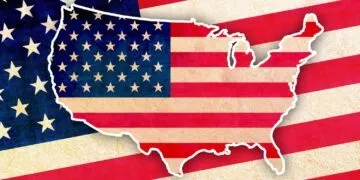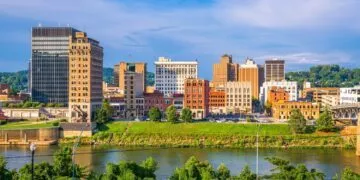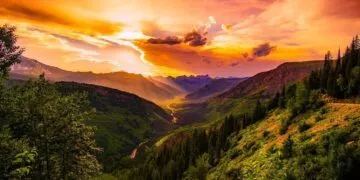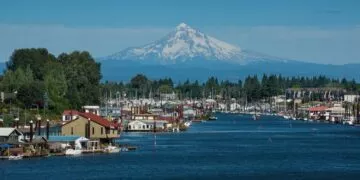Officially nicknamed the “Equality State” but also known as “Big Wyoming,” the “Park State,” and the “Cowboy State,” Wyoming was the 44th state to join the United States of America on July 10, 1890.
Wyoming has a population of 578,759 people (as of 2019), making it the least populated US state.
It’s bordered by the states of Utah, South Dakota, Nebraska, Montana, Idaho, and Colorado.
With a total of 97,914 square miles (253,600 square kilometers) of land and water, it is the 10th largest state.
The capital of Wyoming is Cheyenne, which is tucked away in the southeast corner of the state.
That’s enough fast facts about the Equality State for now; we’re here to learn the more unusual facts!
Wyoming has been inhabited for at least 13,000 years.
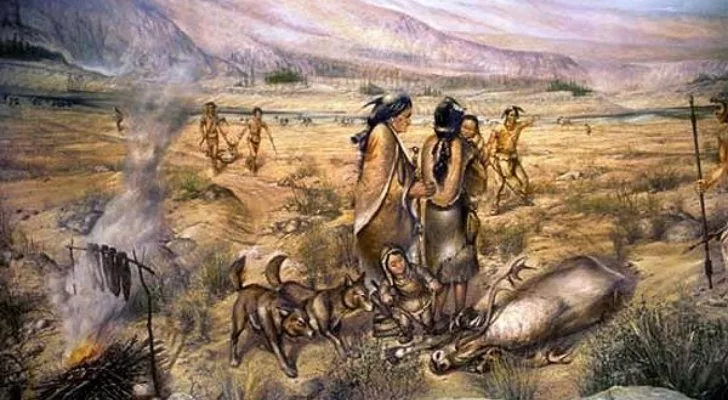
According to modern theories, the Paleo-Indians were the first settlers to explore and settle in North America.
They were hunter-gatherers who entered modern-day Alaska from the far east of what is now Russia sometime between 15,000 to 13,000 BC.
The Paleo-Indians slowly spread out over North America and settled wherever they found reasonable hunting grounds.
Their presence is clear from the uniquely shaped stone spearheads that have been found all over the continent.
By around 11,000 BC, they reached modern-day Wyoming and settled there over time.
There were over ten Native American tribes living in Wyoming when Europeans first arrived.
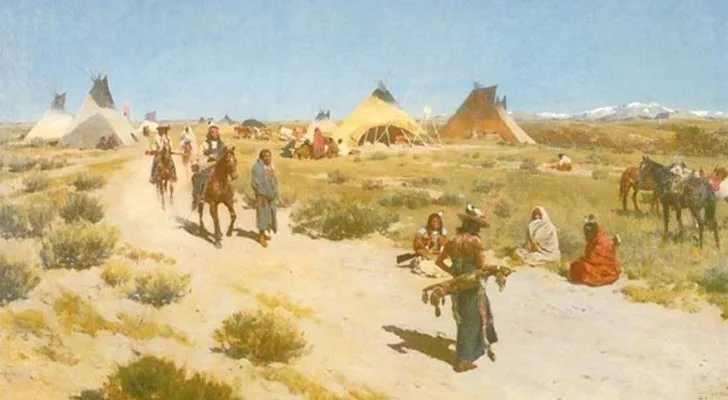
Over the next few thousand years, the descendants of the Paleo-Indians came to live increasingly stable sedentary lives.
This change in lifestyle resulted in increases in technology, culture, and complexity of society.
With this, unique cultures and tribes developed, although many still lived semi-nomadic lives.
By the time Europeans arrived in modern-day Wyoming, the tribes that lived in the region included the Arapaho, Kiowa, Shoshone, Bannock, Crow, Nez-Perce, Cheyenne, Blackfeet, Ute, Gros-Ventre, Sioux, Arikara, and the Tukudeka (sometimes known as the Mountain Sheep-Eaters).
The only tribes which remain in Wyoming today are the Shoshone and Arapaho, who live on the Wind River Reservation.
That being said, many living in Wyoming still identify with many other tribes.
The first European explorers to reach Wyoming were French Canadian.
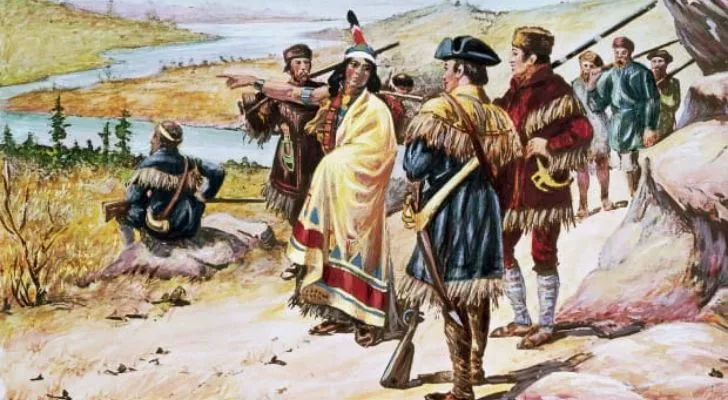
Unlike much of the coastal areas of North America, the region now known as Wyoming was completely unknown to Europe until the mid-18th century.
The sons of the famed French Canadian explorer Pierre La Vérendrye, Louis-Joseph, and François, were the first to document their travels into the northeast of the region while on a failed journey to strike a path through to the Pacific Ocean.
The next Westerner to document their exploits in Wyoming was John Colter, a Lewis and Clark Expedition member who split off and spent some time trapping for fur there at the beginning of the 19th century.
Wyoming changed hands a few times before it became a part of the US.
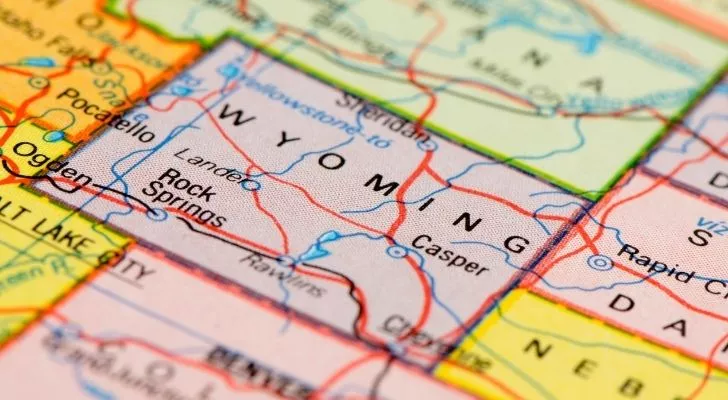
The first European nation to lay claim to Wyoming was Spain, despite none of Spain’s explorers ever setting foot there.
In 1804 the southwest was claimed as a part of the Alta California region of New Spain, but due to its northern location, it was completely ignored.
Later, when Mexico gained independence from Spain, the region fell under Mexican control, but they also never made moves to settle it. The eastern portion of the region was under French control but was sold to the US in 1803 as part of the Louisiana Purchase.
Control of the western parts was disputed at first by Britain and the US at the beginning of the 19th century but eventually became a part of Oregon Territory in 1848.
Most of Wyoming was a part of the Idaho Territory.
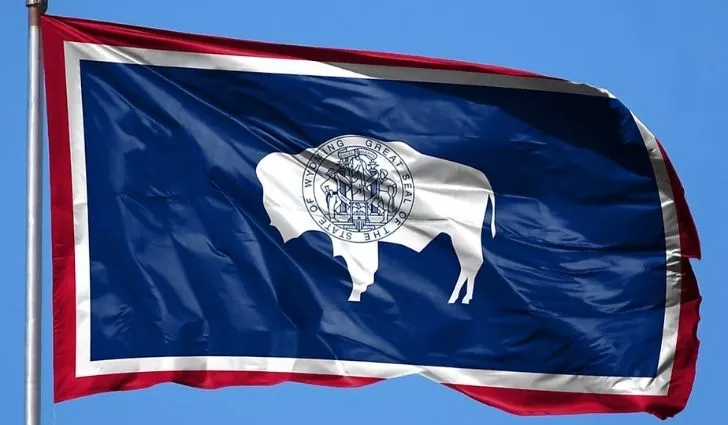
The US control of Wyoming was all over the place in the early years, with parts of it being incorporated into the Dakota Territory, Nebraska Territory, Oregon Territory, and Washington Territory.
Much of it was eventually incorporated into Idaho Territory when it was formed in 1863, except for a small portion in the southwest which was claimed by Utah Territory in 1851.
However, Idaho Territory’s control was relatively short-lived, as much of its claim to the region was formed into Dakota Territory in 1864.
Finally, in 1868 Wyoming Territory was created, with land from Utah, Idaho, and Dakota territories.
Wyoming was the first US state to give women the right to vote.
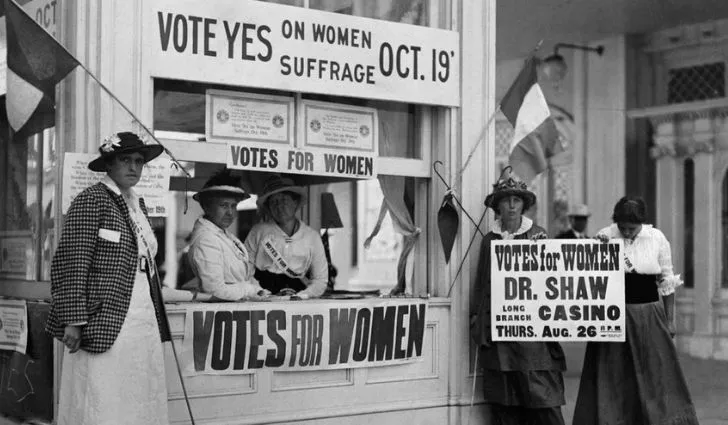
From the 1840s, women from all over the US began to fight for their rights to vote, but it would be nearly another century before their rights were finally cemented with the 19th Amendment in 1920.
Not every state or territory had the same opinion, which complicated the issue significantly.
The people of Wyoming were forward-thinking and progressive, and from the very outset of the territory, they made moves to legalize female voter’s rights.
Just one year after its formation, women over the age of 21 were allowed to vote in Wyoming.
When the territory began to make moves towards statehood, they insisted that Wyoming women should retain their right to vote.
In 1890 the state of Wyoming was formed, becoming the first US state to give women the right to vote.
Wyoming is home to the first National Park in the world.
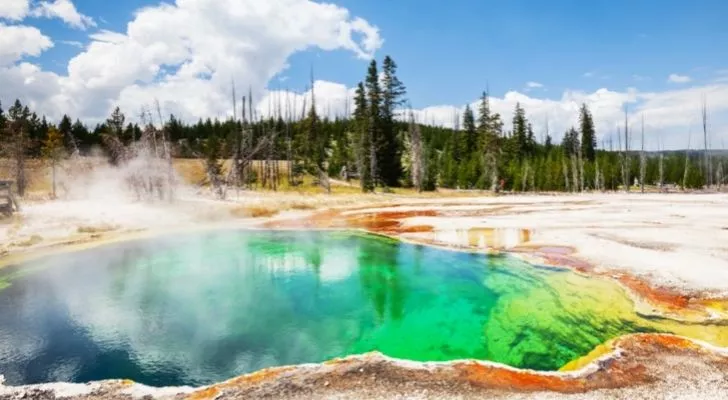
This is, of course, none other than Yellowstone National Park, which became the first National Park in the world when President Ulysses S. Grant established it on March 1, 1872.
People have known about the wonders of Yellowstone for much longer than that, though, as there is evidence of Native American presence there that dates back as far as 11,000 years ago!
In fact, many different tribes hunted there, lived there, and had trade routes that passed through this stunning part of Wyoming.
Today the National Park covers an immense 3,468 square miles (8,983 square kilometers) and is home to the Yellowstone Caldera, the largest supervolcano in North America.
While the Yellowstone Caldera is dormant, the region is full of thermal activity and is home to half of the world’s geysers!
Wyoming’s Red Desert holds the largest sand dune system in the US.
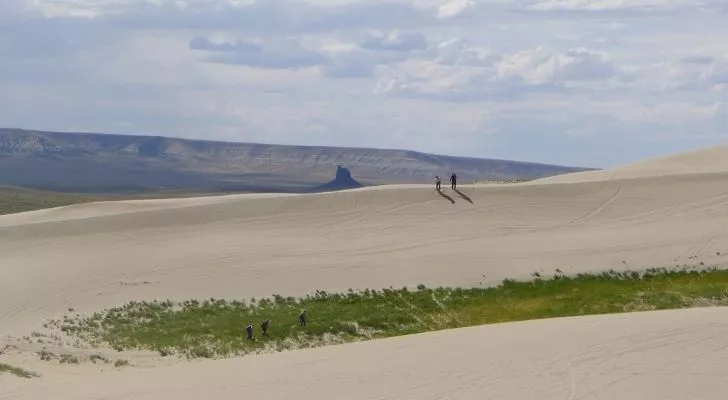
Due to its altitude, the Red Desert lies in Wyoming’s south and is classified as a high-desert ecosystem.
The desert covers an impressive 9,320 square miles (24,100 square kilometers), and within this vast swathe of arid land lies the nation’s largest dune system, the Killpecker Sand Dunes.
The dunes comprise just 169 square miles (440 square kilometers) of the Red Desert.
They’re classified as a living dune system as the ridges of the sand dunes are constantly shifting and changing.
The dunes aren’t devoid of life, though. Instead, it’s common to find temporary oases dotted throughout the area after significant rainfall, which attract all sorts of animals, including wild horses, elk, salamanders, and even freshwater shrimp!
These oases are the only parts of the Killpecker sand dunes that are off-limits, while the rest of the area is a popular destination for off-road enthusiasts.
Despite being a landlocked state, Wyoming has dozens of islands!
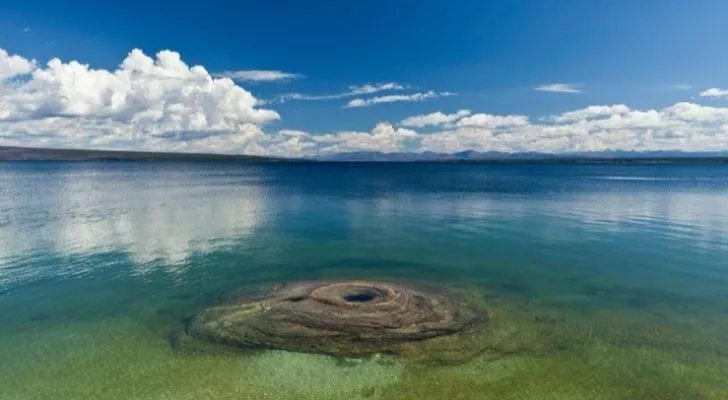
While this may be surprising at first, this makes perfect sense when you consider that Wyoming has several large lakes!
The majority of these islands lie in Yellowstone Lake and Jackson Lake.
Jackson Lake alone is home to eleven islands, of which Elk Island is the largest. Situated smack bang in the middle of the lake, this island is a popular destination accessible by canoe, kayak, or even a dinner cruise!
Yellowstone Lake holds a total of seven islands, the largest of which is the imaginatively named Frank Island.
Wyoming’s islands aren’t just in lakes either, as many can be found in rivers such as Snake, Green, Wind, Bechler, and North Platte Rivers!
Wyoming is the largest producer of coal in the US.
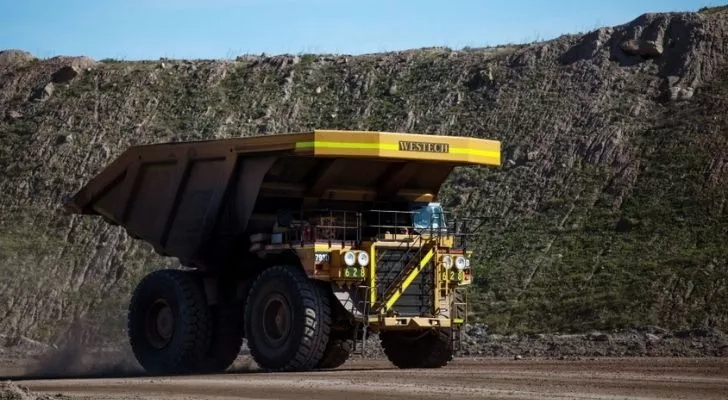
Some may consider this fact as something to be proud of, while others are certainly deeply ashamed of it.
The state’s first coal mine was opened in 1868 by the Union Pacific Railroad Company, with production ramping up steadily over time.
Wyoming has led the nation in coal production since 1986, with 388 million tons of the stuff being produced in 2013 alone.
The vast majority of Wyoming coal is used in the country, with just 52,400 tons being exported in 2015.
More than half of Wyoming’s coal is used in just five states: Iowa, Wisconsin, Missouri, Illinois, and Texas.
Coal plays a significant role in Wyoming’s economy, which is something that will need to be reconsidered with the world’s shift away from fossil fuels.
One of Wyoming’s Governors wore shoes made from an outlaw’s skin to his inauguration ball.

Yes, you read that right, human skin shoes. John Eugene Osborne served as the third Governor of Wyoming for a single term from 1893 until 1895.
Prior to this, Osborne was a doctor in the town of Rawlins.
During his time as a doctor, he examined the body of a recently deceased outlaw named Big Nose George Parrott. Then, for some absolutely bizarre reason, he decided it would be a great idea to tailor a pair of dress shoes from the outlaw’s flesh.
What’s even more bizarre is that no one seemed all that bothered when he later successfully ran for the position of Governor and even wore the shoes while officially representing the state of Wyoming!
So little did this affect this career that he later represented Wyoming in the US Congress for two years in 1897.
The least populated town in the US is in Wyoming, which is the least populated state in the US!
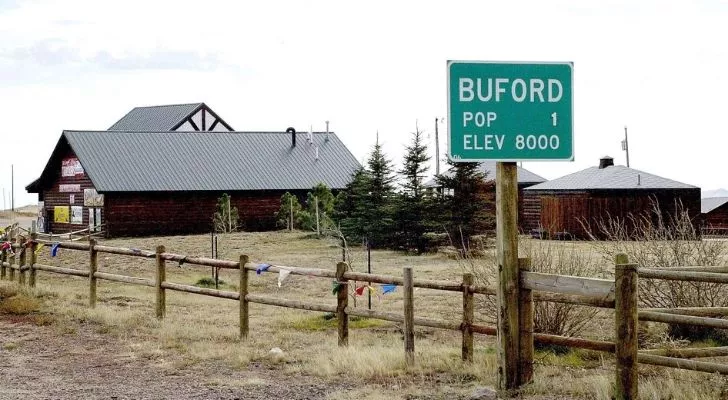
Yep, tucked away in the southeast corner of Wyoming is Buford, a charming little town with a year-round population of just one person. But don’t let Wyoming’s low population fool you – it’s actually the tenth-largest state in the country!
This means there’s plenty of elbow room for everyone in Wyoming, which is why many Wyomingites take great pride in their state.
They absolutely adore the great outdoors, and with such a small population, there’s even more of nature’s wonders to explore.
But don’t think for a second that they’re unwilling to share their state’s incredible beauty with others. Wyomingites love showing off their beloved state and all its breathtaking landscapes.
The second least populated state in the US is Vermont, with around 40,000 fewer people. However, Vermont is about ten times smaller than Wyoming, so you can imagine how much more space there is to roam in the Equality State.
One of the US’ most well-known outlaws gained his name in Wyoming.
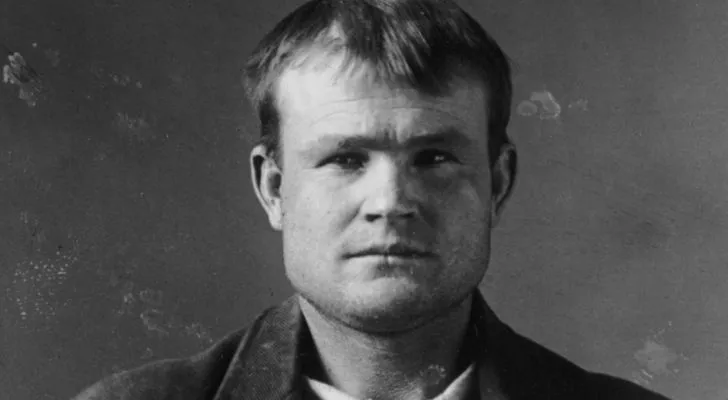
You’ve probably heard of Butch Cassidy and the Sundance Kid, but if not, you could watch the classic 1969 film simply titled Butch Cassidy and the Sundance Kid.
Anyway, we’re here specifically to talk about Harry Alonzo Longabaugh, otherwise known as the Sundance Kid.
You may wonder how an infamous gun-toting outlaw from the Wild West could get such a lighthearted nickname.
Well, the only town that ever managed to put him in Jail was Sundance, Wyoming, when he was the young age of 15.
He was jailed for a hefty year and a half for stealing horses, but at least he got a pretty cool nickname out of it!
In Yellowstone National Park, more people have been injured by bison than any other animal.
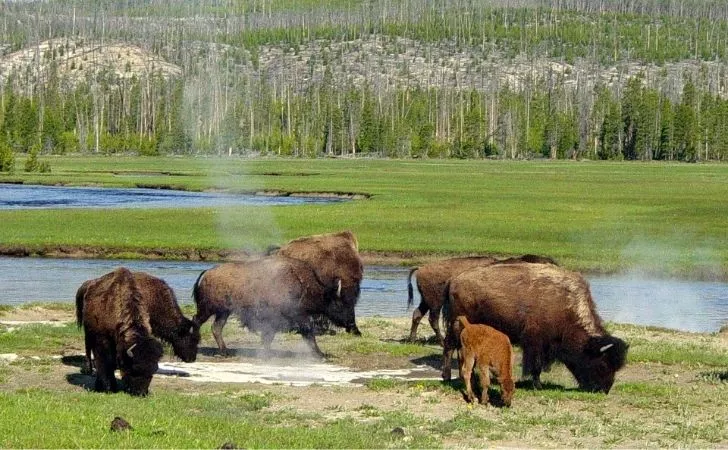
They may look tame and are certainly used to seeing humans, but if you get too close, you’ll likely regret it.
Seriously though, don’t try and approach wild animals wherever you are.
This rule is especially important with bison, the largest land animals in North America (and much of the world!).
Around 5,000 wild bison roam Yellowstone National Park, and park rangers are quick to warn visitors to stay at least 75 feet (23 m) away from them at all times.
Unfortunately, some people choose to ignore this warning. In 2015 alone, five people were reported to have injuries from bison in Yellowstone National Park and four required hospitalization. Three were severely injured and taken away in an ambulance helicopter!
There are so many dinosaur fossils in Wyoming that someone built a cabin out of them!
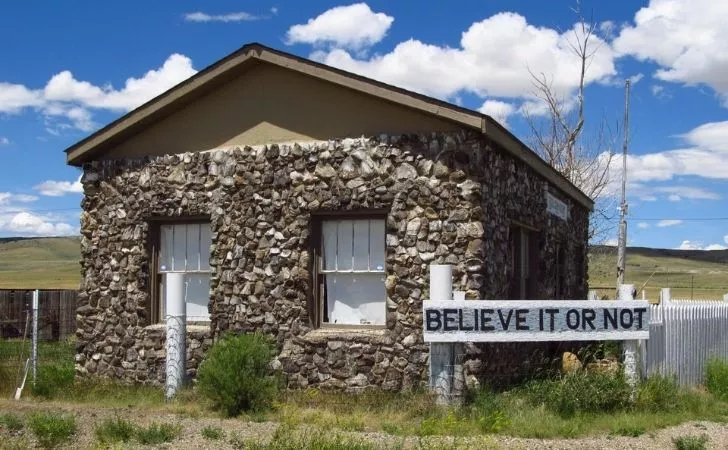
It’s such a crazy concept that it was featured in Ripley’s Believe It or Not.
Back at the turn of the 20th century in Wyoming, you made do with what you had, and one resident happened to have a lot of fossils.
Hilariously, they were completely unaware that they had constructed their cabin out of fossils until a paleontologist happened to pass by in 1897 and point it out.
The owner said they thought the fossils were simply conveniently sized stones and had dug them out of a nearby hillside.
The cabin was nicknamed the “Fossil Bone Cabin” and served as a place of abode and a museum.
These days it’s just a private residence, but you can still check it out from the outside if you’re in the area of Medicine Bow, Wyoming!
If you want to understand what the Wild West was like, there’s no better place to go than Wyoming.
While you won’t find any towering saguaro cacti, the sheer lack of people and the untouched wilderness will make you feel like you’ve stepped back in time!
That being said, the Wyomingites you bump into will undoubtedly be some of the nicest people around, thanks to their old-fashioned, genuine hospitality!
But please, please, stay away from the bison!


